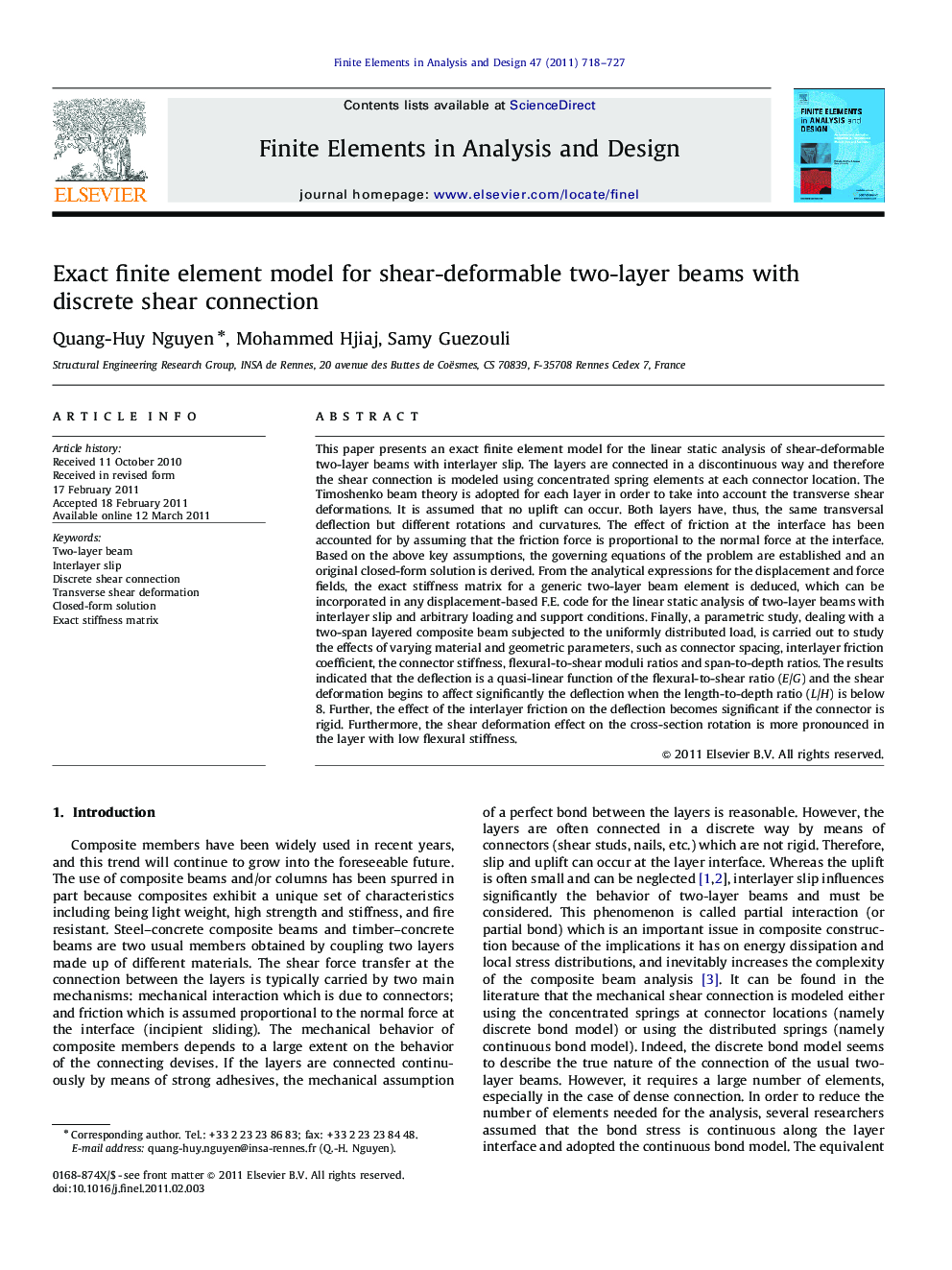| Article ID | Journal | Published Year | Pages | File Type |
|---|---|---|---|---|
| 514039 | Finite Elements in Analysis and Design | 2011 | 10 Pages |
This paper presents an exact finite element model for the linear static analysis of shear-deformable two-layer beams with interlayer slip. The layers are connected in a discontinuous way and therefore the shear connection is modeled using concentrated spring elements at each connector location. The Timoshenko beam theory is adopted for each layer in order to take into account the transverse shear deformations. It is assumed that no uplift can occur. Both layers have, thus, the same transversal deflection but different rotations and curvatures. The effect of friction at the interface has been accounted for by assuming that the friction force is proportional to the normal force at the interface. Based on the above key assumptions, the governing equations of the problem are established and an original closed-form solution is derived. From the analytical expressions for the displacement and force fields, the exact stiffness matrix for a generic two-layer beam element is deduced, which can be incorporated in any displacement-based F.E. code for the linear static analysis of two-layer beams with interlayer slip and arbitrary loading and support conditions. Finally, a parametric study, dealing with a two-span layered composite beam subjected to the uniformly distributed load, is carried out to study the effects of varying material and geometric parameters, such as connector spacing, interlayer friction coefficient, the connector stiffness, flexural-to-shear moduli ratios and span-to-depth ratios. The results indicated that the deflection is a quasi-linear function of the flexural-to-shear ratio (E/G) and the shear deformation begins to affect significantly the deflection when the length-to-depth ratio (L/H) is below 8. Further, the effect of the interlayer friction on the deflection becomes significant if the connector is rigid. Furthermore, the shear deformation effect on the cross-section rotation is more pronounced in the layer with low flexural stiffness.
